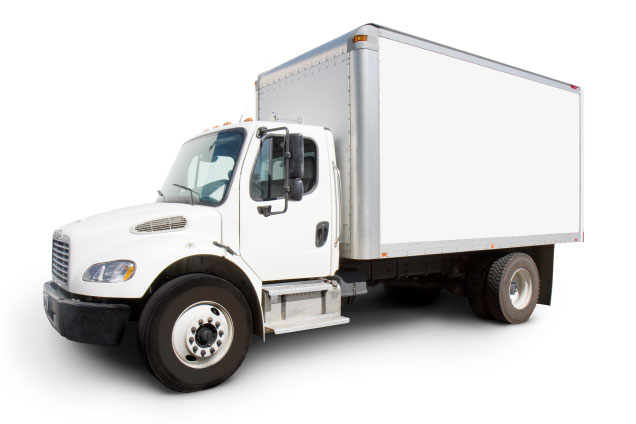Perfect Your Freezer Storage Skills During Its Off-Season
Posted on 15/06/2025
Perfect Your Freezer Storage Skills During Its Off-Season
When it comes to maximizing kitchen efficiency, few appliances are as invaluable as the freezer. Whether it's preserving garden harvests, saving on groceries by buying in bulk, or simply ensuring you always have meals ready on demand, a well-managed freezer is key. But did you know the best time to improve your freezer storage skills is actually during its off-season?
Freezer off-season--typically the spring and summer months when fresh produce is abundant and families lean toward fresh meals--offers the perfect opportunity to reorganize and optimize your freezing techniques. In this comprehensive guide, you'll find tips, tricks, and expert methods to perfect your freezer storage skills and make the most of this underutilized period.

Understanding Freezer Off-Season
The freezer's off-season begins when fresh fruits and vegetables fill the markets, and you're less reliant on frozen stock. This is an ideal window to:
- Declutter your freezer
- Evaluate and rotate food inventory
- Deep-clean the appliance
- Experiment with new storage methods
- Prepare for the busy freezing season ahead
Why Focus on Freezer Organization During Off-Season?
Think of your freezer as a valuable investment. The way you store and manage your frozen foods can influence everything from food safety to family budgeting. Here's why the off-season is the smart time for an overhaul:
- More Time & Energy: Without urgent meal prep needs, you have space to carefully sort and reorganize.
- Reduction in Waste: Discover forgotten items before freezer burn claims them, minimizing food waste.
- Maximize Efficiency: A well-organized freezer uses less energy and preserves food quality.
- Prep for Seasonal Bulk Freezing: Set yourself up for efficient freezing when harvest or bargain shopping begins again.
Main Steps to Perfect Freezer Storage Skills in Off-Season
1. Full Defrost and Deep Clean
Start by removing absolutely everything from your freezer. This ensures no corner is overlooked. If your appliance has built-up frost, now is the time to defrost it completely. Here's a quick step-by-step:
- Unplug your freezer or switch it off.
- Transfer existing food to a cooler with ice packs or another freezer.
- Let any ice melt, then wipe up excess water.
- Wash all surfaces with a mixture of baking soda and warm water.
- Dry thoroughly before plugging it back in.
2. Sort Through and Evaluate Inventory
The off-season gives you a unique chance to notice forgotten items lurking in the back of your freezer. Check for:
- Expired or overly freezer-burned foods
- Duplicate items you can combine
- Foods you no longer enjoy or use
Dispose responsibly and plan meals around items nearing expiration to prevent waste.
3. Redesign Your Freezer Layout
Organizing a freezer isn't just about aesthetics--it's about access and efficiency. The off-season is a great chance to:
- Group Similar Foods: Store meats, vegetables, baked goods, and snacks separately for easy access.
- Use Clear Bins or Baskets: Stack and label bins for categories like "weeknight meals," "smoothie packs," or "baking essentials."
- Label & Date Everything: Use a permanent marker or printable labels with dates and cooking instructions.
- Store Flat Where Possible: Bags with soups, sauces, or berries lay flatter, maximizing available space.
4. Upgrade Your Storage Supplies
High-quality storage containers can make all the difference for safe, organized freezing. As you refine your freezer management skills, consider:
- *Reusable silicone bags* for their airtight seals and eco-friendliness.
- BPA-free plastic containers with tight lids for leftovers or pre-cooked meals.
- Aluminum trays or pans for casseroles or baked goods, especially helpful for batch cooking.
- Vacuum sealers to eliminate air ($$, but excellent for long-term storage).
Investing in the right supplies now will save you time, money, and stress in the busy storage months to come.
5. Learn Advanced Freezing Techniques
The off-season is the ideal moment to experiment and refine your processes--without the risk of ruining precious food. Step up your frozen food skills with these techniques:
- Flash Freezing: Spread items in a single layer on a baking sheet, freeze quickly, then transfer to storage bags, preventing clumping.
- Blanching Vegetables: Briefly boil then ice-bath vegetables before freezing to preserve color, texture, and nutrients.
- Portion Control: Freeze single portions of soups, stews, or proteins for easy future meals.
- Freeze Flat, Store Upright: Lay bags of sauces, purees, or chopped fruits flat to freeze, then store them like file folders for easy identification.
Specialized Freezer Storage Tips for Different Foods
How to Store Meat and Seafood
- Wrap tightly: Remove excess air with vacuum packs or double wrap with freezer paper and foil.
- Freeze at peak freshness: Don't wait--stale meat will not improve in the freezer.
- Label by cut and date: For quick meal planning, note specific cuts (e.g., "Sirloin 4/24").
- Fish and shellfish freeze best when sealed in bags with as much air removed as possible.
Vegetables and Fruits
- Blanch most vegetables before freezing to retain quality.
- Berries and chopped fruit: Use flash freezing and then bag, so they don't clump.
- Store in smaller amounts: Prevent unwanted thaw-and-refreeze cycles that damage produce.
Bread and Baked Goods
- Double wrap: Use a layer of plastic wrap or reusable beeswax wrap, then a freezer bag.
- Slice before freezing: Makes grabbing a portion easier and prevents the whole loaf from thawing.
- Let items cool completely before freezing to avoid excess moisture and freezer burn.
Dairy and Prepared Meals
- Cheese: Freeze shredded or cubed for best results; some hard cheeses freeze better than soft.
- Milk: Leave space for expansion and shake vigorously after thawing to recombine fats.
- Prepared casseroles & soups: Use sturdy containers and avoid freezing dairy-heavy or egg-thickened sauces, as they may separate.
Maintaining Your Freezer Expertise Year-Round
Just as important as perfecting your freezer storage in the off-season is building habits that maintain your freezer's efficiency year-round. Here are the top strategies:
- First-In, First-Out (FIFO): Always use the oldest items first after a new addition.
- Weekly Inventory Checks: Make it part of your meal planning routine.
- Keep a Freezer Inventory List: Stick a magnetic dry-erase board on the freezer door or use a freezer tracking app.
- Don't Overload: Air needs to circulate for foods to freeze properly and appliances to work efficiently.
- Monitor freezer temperature: Keep it at 0°F (-18°C) or lower for safety and freshness.
Freezer Storage Myths to Bust
- Myth: Freezing kills all bacteria.
Reality: Freezing only stops bacteria from multiplying; it doesn't destroy them. Always start with fresh, safely handled foods. - Myth: You can't refreeze thawed foods.
Reality: If fully thawed in the fridge and kept cold, you can refreeze safely, though some texture may be lost. - Myth: Everything tastes the same after freezing.
Reality: Following proper storage methods preserves flavor and texture.
How to Store Seasonal Bounty for Later Preservation
Use your newly honed freezer organization skills to stash away summer's abundance for winter enjoyment:
- Prep produce in batches: Clean, blanch, and freeze piles of fruits and vegetables when prices are lowest.
- Freeze herbs: Chop and freeze in ice cube trays with a bit of oil or water for instant flavor boosters.
- Batch-cook meals: Prepare extra lasagnas, chilies, or sauces and freeze portions for effortless winter dinners.
Eco-Friendly Freezer Habits
Modern freezer storage isn't just about convenience--it's about sustainability too. Here's how to perfect your freezer storage while caring for the planet:
- Opt for reusable, BPA-free containers and bags instead of single-use plastic.
- Repurpose glass jars for sauces, soups, and stews--just leave room for expansion!
- Thaw frozen items in the fridge to contribute to refrigerator cooling efficiency.
- Bulk freeze to minimize packaging waste--fewer shopping trips mean fewer emissions.
Key Mistakes to Avoid in Freezer Storage
- Overpacking bags or containers: Food expands as it freezes; leave headspace.
- Poorly sealed items: Exposed air causes freezer burn and flavor loss.
- Neglecting to label: Mystery objects waste food and time!
- Saving everything "just in case": Be realistic--discard dubious items during off-season clean-out.

The Benefits of Perfect Freezer Storage in the Off-Season
- Extended food shelf life with less spoilage
- Greater meal flexibility for busy schedules
- Money savings by preserving sales or homegrown produce
- Tidier kitchen with designated storage spaces
- Lower stress thanks to clear inventories and efficient access
Your Freezer Storage Skills: Ready for Any Season
When you master freezer storage during the off-season, every meal, batch cook, or food prep project becomes easier and more enjoyable. Consider this your yearly tune-up--an investment in your home, your budget, and your future meals.
Start now by setting aside a weekend during spring or early summer to perfect your freezer's organization and efficiency. With these comprehensive strategies, your freezer storage skills will not only shine but ensure you're always ready--no matter what's in season!
Don't wait for the next freezer "emergency"--make the most of the off-season, and enjoy the rewards all year long!





